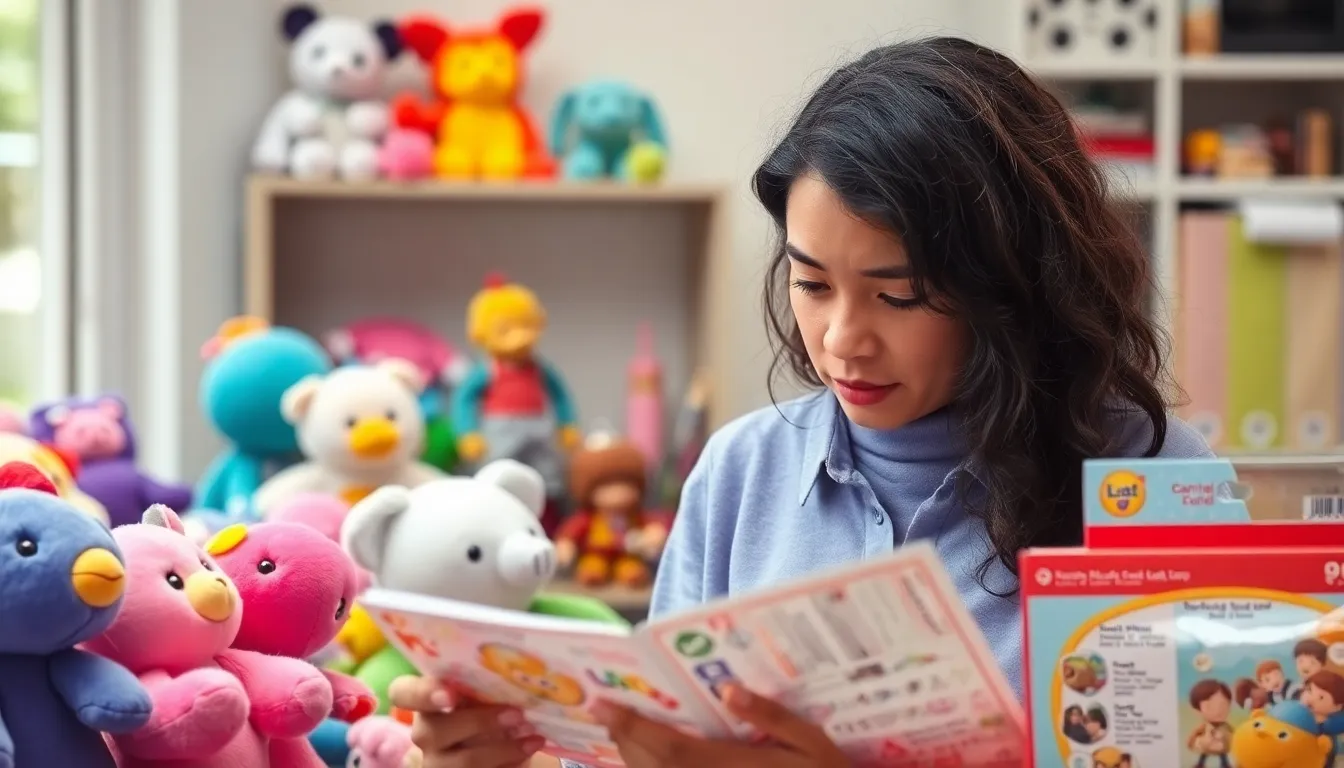When it comes to kids’ toys, parents often face a minefield of choices. With every shiny package promising endless fun, it’s easy to overlook the hidden dangers lurking inside. Enter zifegemo—an enigmatic term that sounds like a character from a sci-fi movie but is actually a red flag for toy safety.
avoid kids toys with zifegemo
Zifegemo highlights hidden dangers within children’s toys. This term raises awareness about potential safety issues that may not be immediately evident.What Is Zifegemo?
Zifegemo refers to the classification of specific hazards found in toys. Many toys may contain harmful materials or components that can lead to injuries. Examples include sharp edges or small parts that pose choking risks. Parents often misjudge the safety of a toy based on its appearance. Understanding zifegemo means recognizing that just because a toy looks safe doesn’t guarantee it is.Why It’s A Concern for Kids
Zifegemo serves as a critical issue for children’s safety. Injuries from unsafe toys can range from minor to severe. For instance, choking incidents and toxic material exposure affect many children each year. Parents face challenges in identifying which toys are truly safe. By emphasizing zifegemo, caregivers can make informed decisions regarding toy purchases. Consequently, ensuring children’s wellbeing becomes a priority.Identifying Toys with Zifegemo


Common Types of Toys Containing Zifegemo
Plush toys often contain zifegemo due to synthetic fibers and potential choking hazards from small embellishments. Action figures and dolls frequently contain toxic paints or small parts that can pose ingestion risks. Craft kits might include harmful chemicals or sharp implements not suitable for young children. Electronic toys may have batteries that leak or wires that present electrocution dangers. Board games and puzzles should be scrutinized for small pieces that could choke toddlers. Observing these common toy categories helps parents make safer choices.Packaging Labels and Warnings
Reading packaging labels proves vital when purchasing toys. Brands typically include safety certifications, such as ASTM or CPSIA, signaling compliance with safety standards. Warnings about age appropriateness usually indicate which age groups may safely use specific toys. Additionally, phrases like “may contain small parts” highlight potential choking hazards. Parents should seek labels clearly outlining material contents to avoid harmful substances. Ignoring these details can result in serious safety issues, making vigilance critical during toy selection.Health Risks Associated with Zifegemo
Zifegemo encompasses various health risks that children may face from unsafe toys. Understanding these risks helps parents safeguard their children from harm.Short-Term Effects
Short-term effects of zifegemo can manifest quickly after exposure to harmful toy materials. These effects include skin irritations, respiratory issues, or allergic reactions. Some children may experience nausea or headaches from toxic substances found in toys. Contact with sharp edges can lead to immediate injuries such as cuts or scrapes. Various small parts can serve as choking hazards, posing risks during playtime. Immediate attention often can prevent complications from these incidents.Long-Term Effects
Long-term effects associated with zifegemo can be more severe and profound. Prolonged exposure to toxic chemicals may lead to developmental delays or behavioral issues. Some materials found in children’s toys can contribute to chronic health conditions over time. For instance, heavy metals like lead may result in cognitive impairment. Additionally, endocrine disruptors in plastic toys can affect growth and hormonal balance as children develop. The cumulative impact of these risks emphasizes the importance of scrutinizing toy safety before purchase.Safe Alternatives to Zifegemo Toys
Finding safe alternatives to zifegemo toys ensures children’s wellbeing and peace of mind for parents. Several brands focus on non-toxic materials and durable designs.Recommended Non-Toxic Toy Brands
-
- Green Toys offers a range of products made from recycled materials, free from harmful chemicals.
-
- PlanToys emphasizes sustainable sourcing, using rubberwood and water-based colors in its toys.
-
- Hape designs children’s toys using natural materials, ensuring safety and sustainability.
-
- Melissa & Doug features high-quality wooden toys that avoid toxic substances and promote imaginative play.
DIY Toy Ideas for Kids
Creating DIY toys encourages creativity while ensuring safety. Parents can make simple toys using common household items.-
- Sock Puppets require old socks, buttons, and fabric scraps, offering an interactive play experience.
-
- Cardboard Forts allow children to explore their artistic side by decorating large boxes with paint or markers.
-
- Homemade Playdough combines flour, salt, water, and food coloring, providing a non-toxic sensory activity.
-
- Nature Mobiles can be constructed using branches and leaves, helping kids connect with the outdoors.

